Nice another in a long list of great weekend getaways from Rome

NICE, France — Growing up in America, weekend getaways were pleasant but limited affairs. In Oregon, we’d go to the Coast. The Pacific Ocean was too cold for harp seals but it was peaceful and only an hour away. In Las Vegas, I’d go to Southern California. In Denver, the mountains.
Living in Rome, “weekend getaway” takes on a whole new universe. A 90-minute flight will get me to (Take your pick):
* The French Riviera
* The Greek Islands
* Tunisia
* Barcelona
* Munich
* Paris
From Denver, 90 minutes gets me to Omaha.

Thanks to EasyJet, the British-based discount airline, it costs less to fly to London than it does take a train to Venice. Seriously, it cost me 88 euros round trip to fly to London on assignment last month. I went to Venice last year and paid 120. EasyJet has no two weeks advance purchase. Flying one way doesn’t cost the same as round trip.
EasyJet is the greatest boon to European travel since the sidewalk crepe stand.
Which is why celebrating birthdays in Europe is so special. In March I spent my birthday in Sicily. This past weekend I took my girlfriend to Nice for her birthday. I’d pat myself on the back and say I’m not a cheap boyfriend but, in fact, the round-trip tickets for two of us were all of 138 euros. That’s 69 each. Sixty-nine euros on a U.S. airline sometimes won’t pay for your stored luggage.

In an hour and 15 minutes, we were transported from Rome to one of the jewels of the French Riviera. I’ve been to Nice numerous times covering cycling but this time I was with a woman and not a tape recorder. It’s a great city to do nothing, to leisurely stroll Vieux Nice (old town), eat classic nicoise cuisine and swim in some of the clearest waters in Europe.
With 343,000 people, Nice is the fifth largest city in France. But the way it languidly stretches along some of the 2,000 miles of French coastline, with lounge chairs and beach umbrellas dotting the way, it seems smaller. Just 25 miles from the Italian border, it has Italy’s La Dolce Vita mentality but France’s discipline for cleanliness and creativity for cuisine. It rarely tops the low 80s in the summer, rarely dips below 50 during the day in the winter. It has never recorded a 100-degree day. In the 18th century, Nice became famous as a destination for wealthy English aristocrats. The Promenade des Anglais (The Promenade of the English), the boardwalk constantly populated by rollerbladers, cyclists, joggers and lovers, is named for them. One famous singer has a house in Mont Boron in the hills above Nice overlooking the bay.

If it’s good enough for Elton John in the summer, it’s good enough for my Marina for the weekend.
Nice has the second most hotels in France to accommodate 4 million visitors a year. I chose the Anis, a three-star hotel on the west side of town just a 10-minute walk uphill from the beach. The Anis is a bit like some women in French cinema. You could tell it was a beauty at one time but now appears tired. It knows its best days are behind it and doesn’t do much to clean up its image. When we checked in, the small pool had dirty dishes on a table between chairs. The little rinse pool for your feet was empty except for a giant plastic water bottle. The paint was peeling and a drab, dingy conference room greeted us as we walked to the elevator.
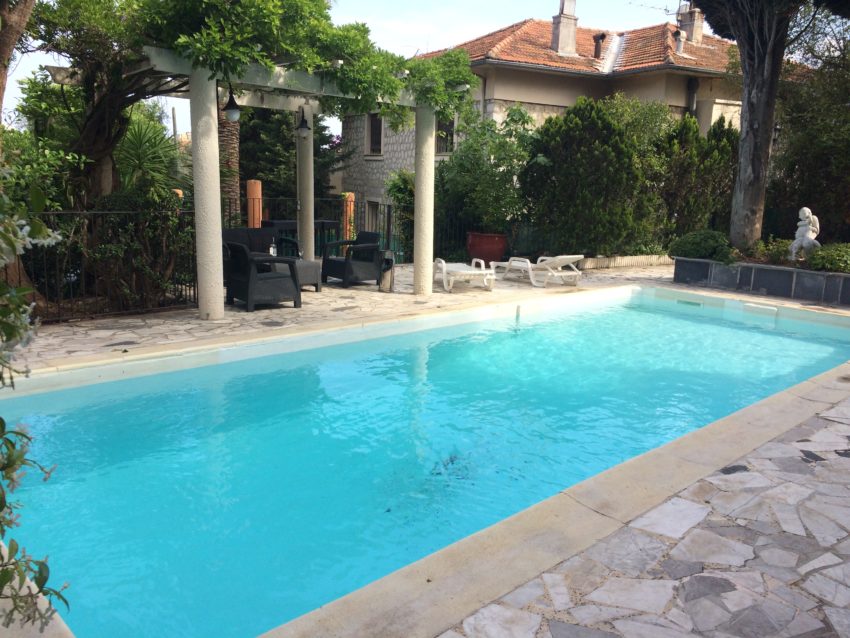
But our room was lovely with a small balcony and table overlooking the sea. We ate buffet breakfasts of croissants, crepes, cheeses and hams on an outdoor patio under a giant tree. The tasteful bar had comfortable seating and the German host during the day spoke three languages and if she was any more helpful she would’ve had to pack our bags.

Considering Nice also hosted a first-round game in the European Championships, arguably the most competitive soccer tournament in the world, we were lucky we weren’t sleeping on the beach. More than 40,000 Northern Irish had poured — in some cases, literally — themselves into town. A competitive number of Poles, a few displaying occasional flashes of sobriety, joined them for Sunday’s Northern Ireland-Poland clash.
The weather was perfect for anything, from drinking to swimming, preferably not at the same time although I thought I saw a 30ish man from Belfast try it. The beach helped make Nice famous and surely was a subtle reason France and Italy kept swapping it back and forth until France took control for good in 1860. From the bluff that takes you around the corner to Nice’s lovely, clean harbor housing some yachts that look more like private jets, Nice’s beach seems to stretch all the way to the Spanish border.
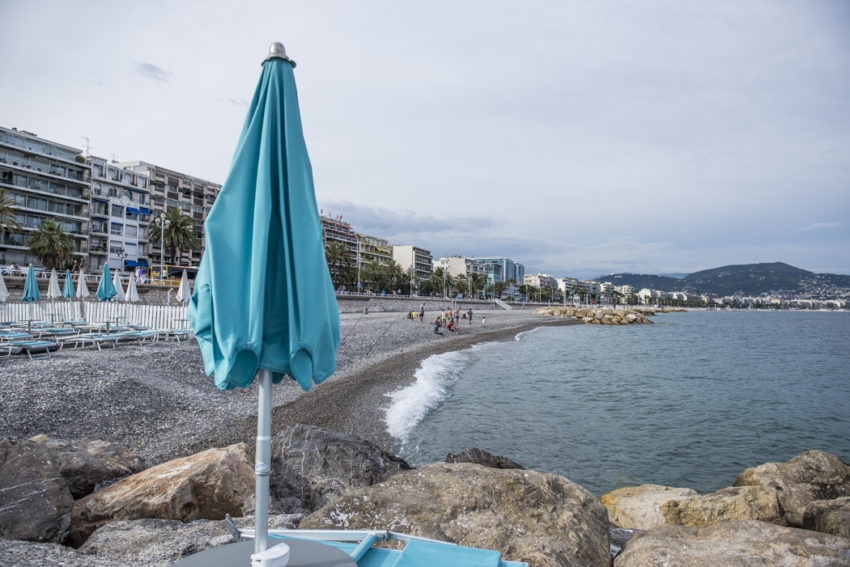
The beach is a paradox, combining the best and worst of both beach worlds. As you wind your way down from the road and the view you get on half the postcards and posters of Nice, you notice something. That sand on the beach isn’t gray. It’s not even sand. It’s rocks. As far as you can see. Small rocks. Big rocks. Sharp rocks. Slippery rocks. Nice’s beach, as a surprise to me, doesn’t have a grain of sand. The beach in Murmansk along Russia’s Barents Sea has more sand than Nice. I’ve been on rocky beaches before in Greece and the Greeks told me it’s quite comfortable once you settle your beach towel on one spot. Plus, it keeps away mass tourism.
What’s the French word for “bullshit”?
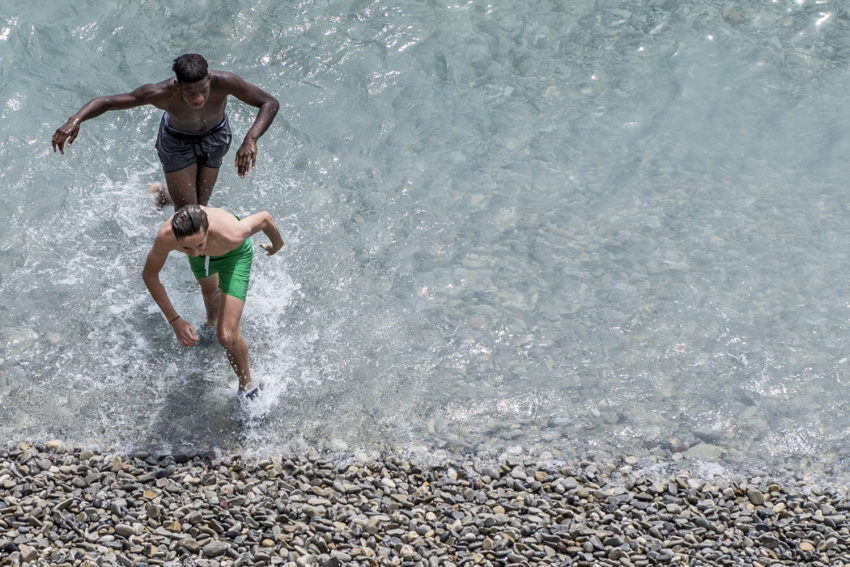
They’re rocks. Rocks hurt. Walking from my lounge chair to the water was like walking half naked across a highway after a 10-car pileup. It felt like I was stepping on shattered glass. Then comes a little hill of pebbles going directly into the water. My foot slid five feet as it plowed through an avalanche of jagged pins and needles. You must dive in the water just to avoid the rocky ocean floor as slippery as a greased ice patch. The reasons are geological. The rocks come from the Alps via rivers in Provence such as the Var. Rocks in Nice aren’t considered a nuisance. In fact, they’re protected. The government prohibits you from removing rocks from the beach, meaning it also protects you from making an arse of yourself by bringing home rocks as souvenirs.
Being an American, I grew up thinking beaches were only like the ones in California and Florida and Hawaii and the Caribbean. Rocks were considered litter. Marina is Italian. She’s used to rock beaches. She says it helps keep the water clean. Yes, that it does. The lack of sand in Nice makes the water as clear as a swimming pool. When the sun is out, which is often in Nice, the visibility is good enough to snorkel — if there was anything to see but rocks. The water temperature was refreshing but not cold. We rented lounge chairs for 7.50 euros each. To read Charles Dickens on a deeply cushioned lanais looking out at the sun-splashed Mediterranean Sea, rocks are mere background dressing.
Nice, however, offers so much more than the Mediterranean. At the far east end of the beach, just across the promenade is Vieux Nice, or Old Town. It’s a labyrinth of windy alleys and small streets all lined with bars, pubs, restaurants and novelty shops. It’s like Italy’s centro storicos with better bread. On this weekend, nearly every pub was filled with green- and red-clad soccer fans singing a variety of filthy songs. I don’t know a word of Polish. Their songs just sounded dirty.
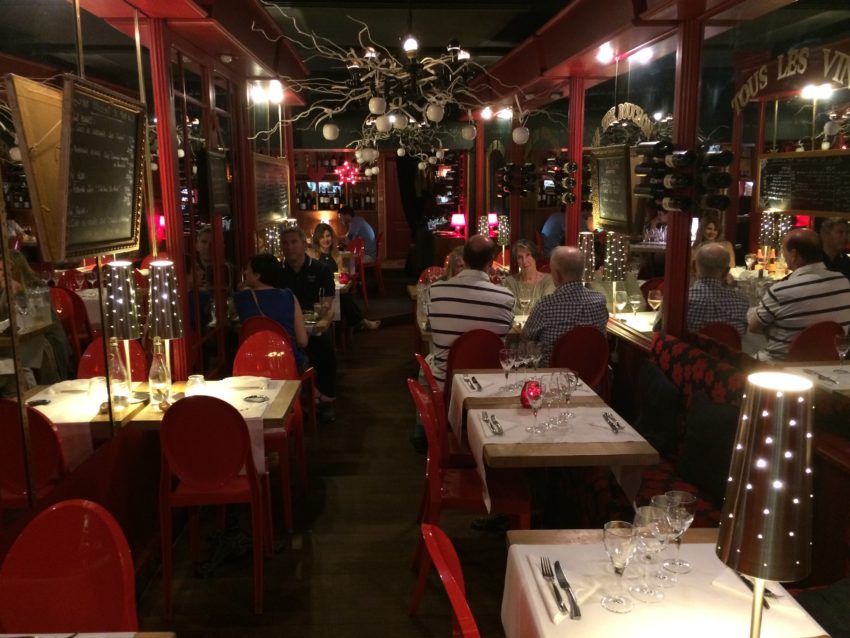
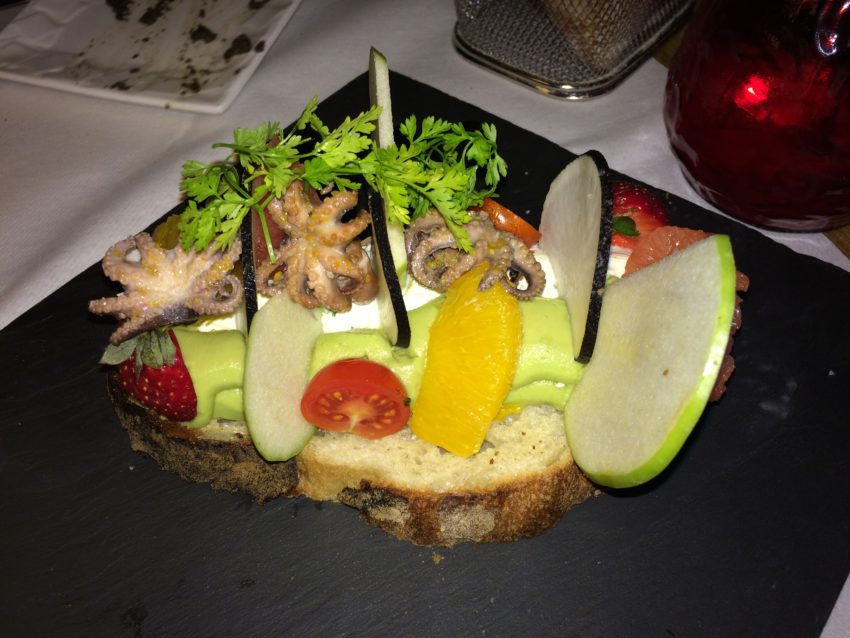
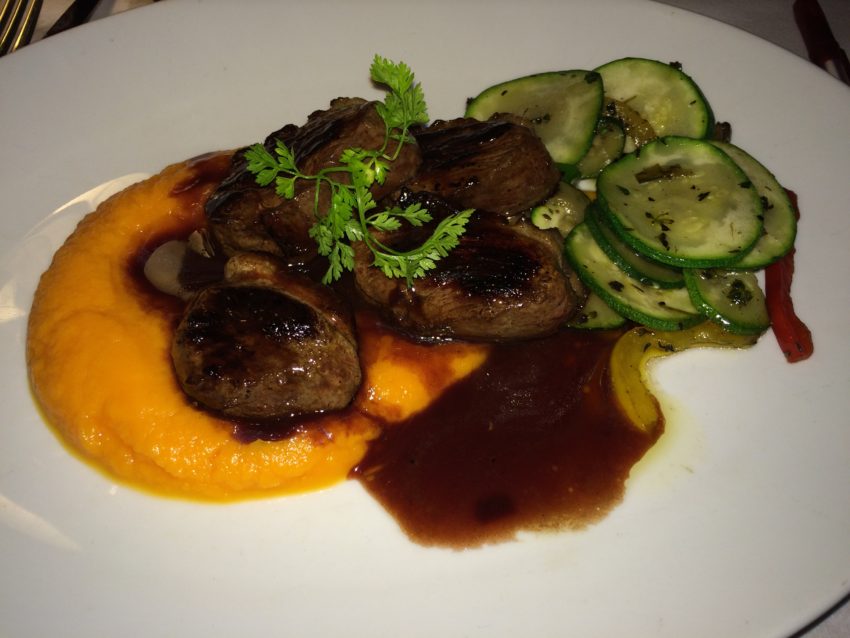
But we found safe havens in restaurants. For Marina’s birthday, I took her to Le Tire Bouchon. It’s considered one of the most romantic restaurants in Nice although you wouldn’t know it by the name. It just tells you the French’s relationship with wine if they named a romantic restaurant after the French word for “corkscrew.” Le Tire Bouchon is lined with sexy red walls and red chairs accented by white tablecloths and lit by odd lamps that look giant white spiderwebs. The food was nothing short of spectacular. We had an opening basket of French bread (Sorry, Italy. You met your match here.) with a spread made from olives, garlic and anchovies. Then came a wild, artsy appetizer consisting of chunks of pink grapefruit, oranges, strawberries, radishes and octopus on a bed of avocado-chive sauce over a big slice of sourdough bread. My entree was sliced duck in sangria sauce. I don’t even have to describe it. It just sounds wonderful, doesn’t it?
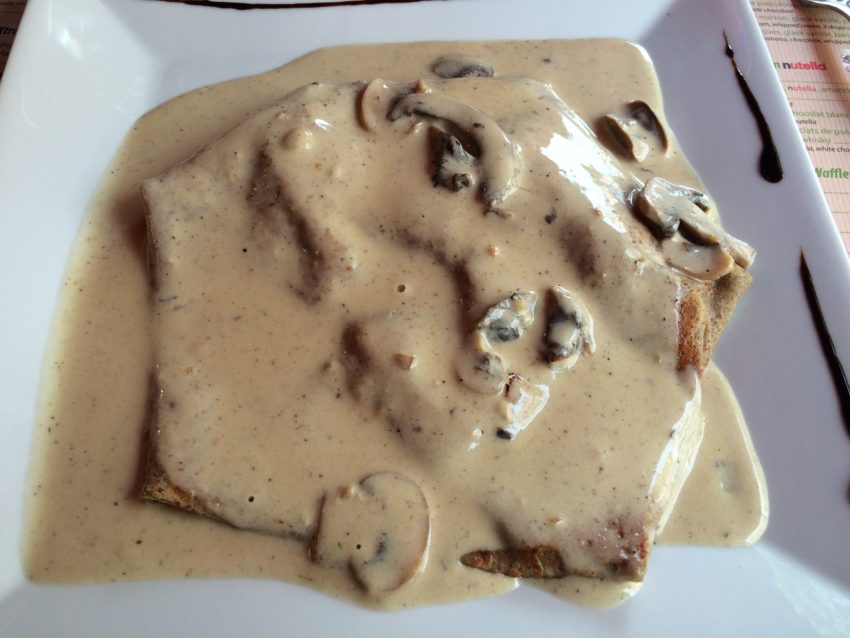
Crepes are huge in France and anyone who loves thin pancakes will love what the French do with crepes. The French use them with meat, vegetables, chocolate, fruit, cheese, everything in their cuisine. For lunch the next day we wandered through Vieux Nice and found two bored waitresses sitting in an empty open-air restaurant called Pop-O-Thym. The friendly, round owner with a salt-and-pepper goatee told us the name is a play off the word “popotin,” the local dialect word for “Move your butt.” While the marketing strategy seemed strange, it should mean to move your butt to this place. I’ve been all over France. This place has the best crepe I’ve ever had. I had La Vafastake: marinated chicken, cheese and mushrooms buried in white wine sauce. It was like a juicy chicken croissant.
Our final meal we walked all over Vieux Nice looking for one of the many ethnic foods we can’t find in Rome: Vietnamese. We finally found a rough equivalent, an allegedly Laotian restaurant called Lao Vientiane. It’s a tiny place packed with locals, not a single one of them wearing red or green. Only one problem. This Laotian restaurant had no Laotian food. Maybe it was their way of representing Laos’ tough economic troubles but instead I settled on a Thai dish of roast pork skewers in peanut sauce. Even this simple Thai diet staple exploded off the plate. When it comes to food, the French can’t do anything poorly.

It’s what I love about Italy. It’s what I love about Europe. And living on this little slice of the planet, other cultures seem only a knife and fork away.

